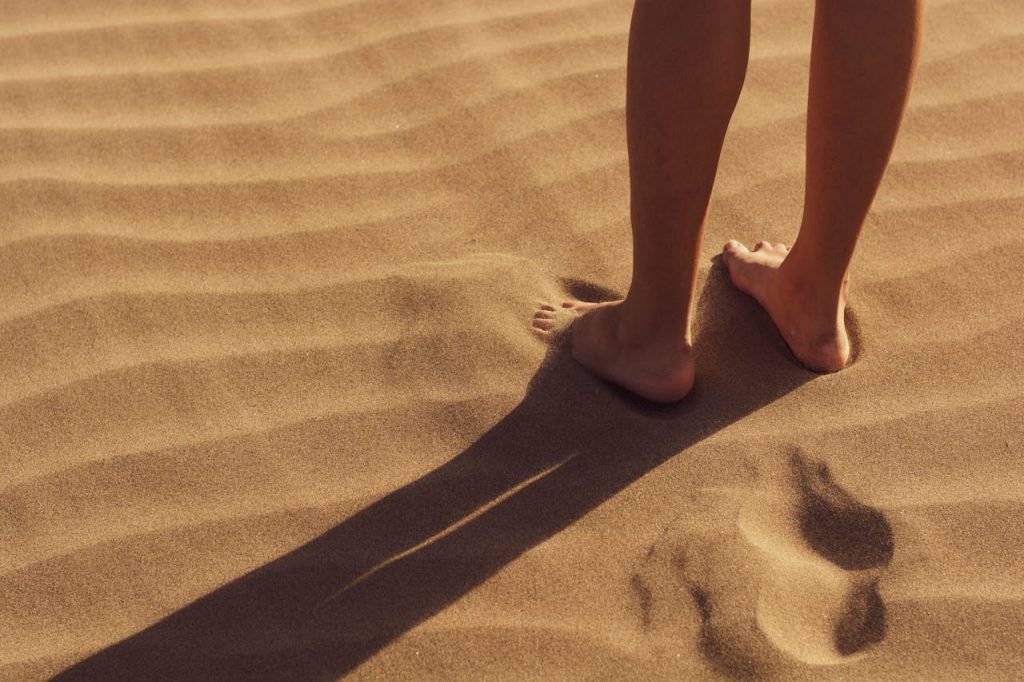A heel spur is a calcium deposit that forms on the underside of the heel bone. This growth can affect other parts of the foot. Typically, heel spurs are tiny, so they may be invisible to the naked eye. In addition, they may develop alone or be connected with other health conditions. More than 50% of people with heel spurs also suffer from plantar fasciitis, and plantar fasciitis, in turn, increases your chances of developing heel spurs. According to orthopedic surgeons 1 in 4 people will experience a heel spur sometime in their life.
Are you asking yourself “Why do my feet hurt?”
Your Heel Spur Caused Plantar Fasciitis
According to Bob Schrupp and Brad Heineck, heel spurs are not the cause of your pain, believe it or not. These Physical Therapists claim that the cause of your pain is due to Plantar Fasciitis. There has been research done on random individuals across the United States showing that more than 15% of Americans have Heel Spurs AND dont have pain. If you can actually feel the heel spur (which is very rare) then the heel spur has grown enough to actually cause pain. If you live in the San Francisco Bay Area the best thing to do is contact The Shoe Doctor and schedule a free consultation to see how custom orthotics can help solve this painful affliction as soon as possible.
Increased Pressure On The Feet
If you’re an athlete or a long distance runner there is a significant chance you will be afflicted with heel spurs, which can lead to plantar fasciitis. If you’re a long distance runner or run every day as part of your exercise, you definitely need to concentrate on your feet. Apart from daily runners, there are many people that are required to stand for a long period of time during work. Throughout the day, stress can accumulate igniting pain on your feet. According to The Style Shoes, men & women in the ages from 40 to 70 are highly at risk of developing heel spurs. If you feel minor pain arising, Health Remedies recommends adding ice to your ankles, resting a couple days, and stretching more often.
Being Overweight
Being overweight puts a significant amount of pressure on a person’s feet. It’s not uncommon for someone to start running to lose weight but the amount of mileage they choose can put a lot of extra strain on their muscles and tendons. This is especially true if they aren’t strong to begin with so it could lead to a quick breakdown in the tissue area, causing Heel Spurs, which can lead to Plantar Fasciitis, according to Crossfit Invictus. Before heading to your nearest gym in the Danville area, make sure you have the appropriate shoes and an established exercise plan to enhance your leg strength.
Are You Looking For A More Stable, Long-Term Solution to Heel Spurs?
The Shoe Doctor has been providing custom orthotics for 20 years for the sole purpose (no pun intended!) of bringing you back to your better days, the days where you walked without having pain. We do this by applying our many years of work into educating you towards better habits, creating a 3D map of your feet, and creating custom computer generated orthotics for your shoes. Custom computer generated orthotics create a longer lasting solution than over-the-counter orthotics because they are shaped purposely to your feet. Over the counter Orthotics only address one of your three arches of your feet. Leaving the other two arches unsupported. I have found to truly walk without pain and keep the plantar fasciitis coming back all three arches need to be fully supported. If you want the best, and you live anywhere in the San Francisco Bay Area (driving directions here), The Shoe Doctor is the best place to go! We’re here to assist, give us a call (925) 820-0220 for your free consultation. And remember, “Foot Pain Isn’t Normal!”
Sources
Fabiosa: https://fabiosa.guru/med-rsmkib-aumkib-ilkzk-pdkv-heel-spur-symptoms-risk-factors-and-how-to-relieve-the-pain/
wikiHow: https://www.wikihow.com/Get-Rid-of-Heel-Spurs
Youtube, Bob Schrupp & Brad Heineck: https://www.youtube.com/watch?v=S30nHV5A5Os
Healthy World Network: http://healthyworld2network.com/causes-symptoms-treatments-home-remedies-heel-spurs/


